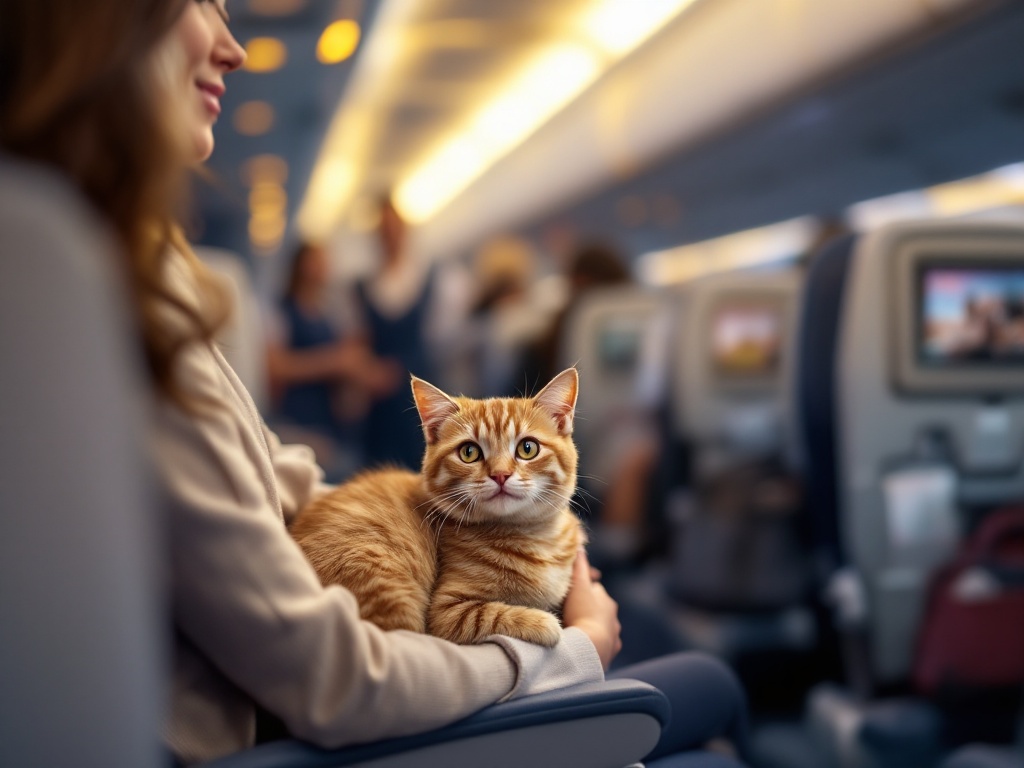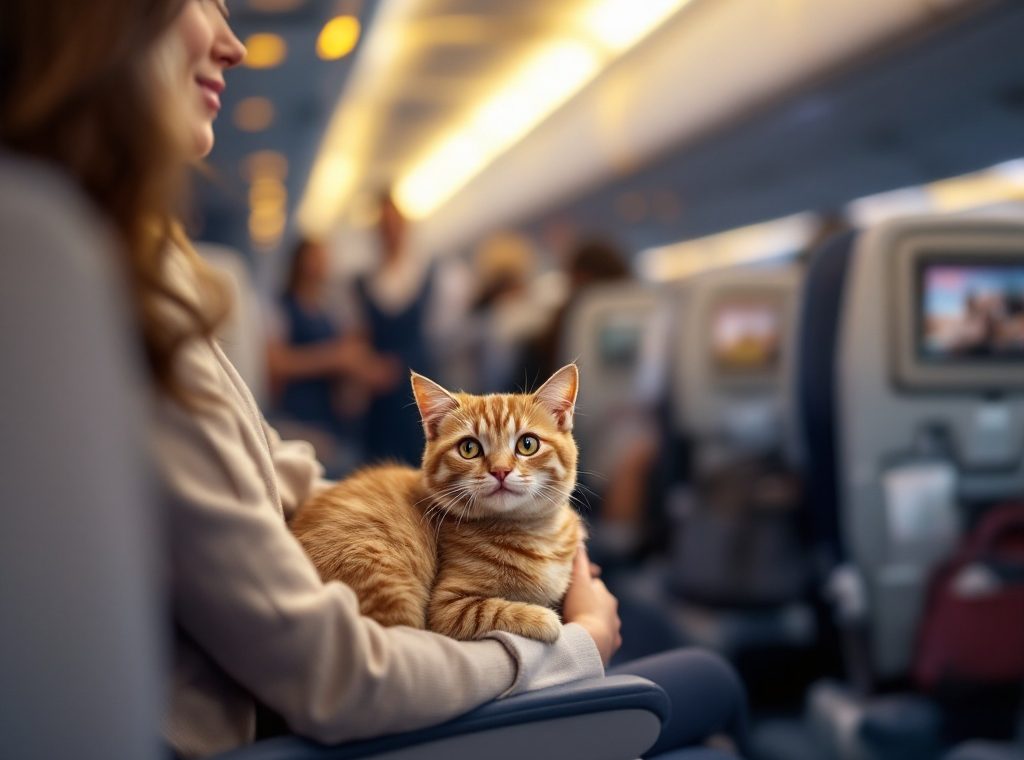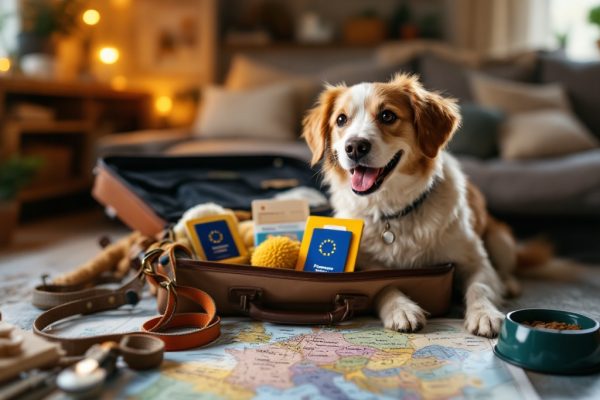Traveling with a Cat on a Plane: Must-Know Info
Planning a flight with your feline friend? Navigating airline pet policies can be tricky. This guide simplifies the process, covering everything from carrier requirements and health certificates to managing your cat’s stress during the journey. Learn about airline-specific regulations, fees (typically $75-$125 each way), and the importance of booking in advance. Discover expert tips for a smooth airport experience, including security screening and in-flight comfort. Prepare for a stress-free flight for both you and your cat. Read on to ensure a purr-fect journey!
Important information

- Airline pet policies vary. Confirm your airline’s specific rules about cabin carriers, size, weight, breed, and required documents.
- A vet health certificate is usually required. Schedule a checkup before your trip.
- Get your cat used to the carrier. Make it comfortable and familiar to reduce stress.
- Expect fees for in-cabin pets. Book in advance, as space is limited.
- Use a secure harness and leash at the airport. Your cat must leave the carrier during security screening.
Understanding Airline Regulations for Traveling with a Cat
Traveling with your cat requires careful planning, especially concerning airline pet policies. Each airline has specific regulations regarding traveling with animals, so it’s essential to check your chosen carrier’s rules. Most airlines allow cats in the cabin, but carrier size and weight restrictions are common. Breed limitations and health certificate requirements can also vary. Major carriers like American, Delta, and United have detailed pet policies on their websites, outlining fees, approved carrier dimensions, and required documentation. Checking these policies in advance is crucial for a smooth journey for both you and your cat. Here’s a step-by-step guide to help you prepare:
Check your airline’s specific pet policy. Every airline has different rules and regulations, so it’s crucial to review the specific guidelines of the airline you’ll be flying with. This includes checking their website or contacting their customer service.
Confirm carrier size and weight restrictions. Airlines have specific size and weight limits for pet carriers allowed in the cabin. Ensure your carrier complies with these restrictions to avoid issues at the airport.
Inquire about breed limitations. Certain airlines may have restrictions on specific cat breeds, particularly brachycephalic (short-nosed) breeds. Check if your cat’s breed is permitted for air travel with your chosen airline.
Obtain necessary health documentation. A health certificate from a veterinarian is usually required for air travel with pets. Check your airline’s specific requirements and ensure your cat has the necessary documentation before your trip.
Understand associated fees. Most airlines charge fees for transporting pets in the cabin. Be sure to inquire about these fees in advance to avoid surprises at check-in.
What Are the Airline Policies for Cats in the Cabin?
Traveling with your cat? Most major airlines, such as American, Delta, United, Southwest, and JetBlue, allow small cats in the cabin. However, policies vary, so check with your specific airline regarding carrier size, weight limits, and required health certificates. Generally, cats must travel in carriers that fit under the seat, and there’s a fee, typically between $75 and $125 each way. Book in advance, as airlines limit the number of pets per flight.
How to Confirm Your Cat Can Fly in the Airplane Cabin
Before your cat’s flight, follow these steps:
Confirm that your cat is allowed in the cabin.
Verify that the carrier’s dimensions and your cat’s weight comply with the airline’s regulations.
Contact the airline directly to ensure the carrier fits comfortably under the seat.
Preparing Your Cat for Air Travel
Preparing your cat for air travel involves acclimating them to their carrier to minimize stress during the flight. You will also need a health certificate, a common requirement for most airlines, even for domestic trips. With these steps, your cat’s journey will be much smoother. Here’s a step-by-step guide:
Carrier acclimation: introduce your cat to the carrier gradually. Place it in a familiar area with familiar bedding and toys. Reward your cat with treats and praise when they enter the carrier. Gradually increase the time spent inside, eventually feeding them meals in it, so they associate it with positive experiences.
Veterinarian visit: schedule a checkup to obtain the necessary health certificate. Airlines typically require this document to confirm your cat’s fitness for travel. This is essential for both domestic and international flights to ensure the safety and well-being of your cat and other animals.
Airline regulations: familiarize yourself with specific airline regulations regarding pet travel. These may vary in terms of carrier size and ventilation requirements, as well as any breed restrictions or documentation needed. Checking these details in advance will prevent any last-minute surprises at the airport.
What Health Certificates and Vaccinations Are Required?
Planning a flight with your cat? A veterinarian’s health certificate is essential, confirming your cat’s fitness for air travel. Ensure vaccinations are up-to-date. Remember that airline-specific regulations vary, so consulting their guidelines is key before you go.
How to Acclimate Your Cat to Their Carrier
Transform your pet carrier into a cozy haven by leaving it open and accessible at home. Fill it with familiar comforts like favorite toys, bedding, and tasty treats to create a welcoming environment. Start with short practice trips to build your pet’s confidence and ease travel anxiety. A comfortable pet ensures a smoother, happier journey for everyone.
Should You Feed Your Cat Before Traveling?
Skipping breakfast before flying can minimize nausea and vomiting, which helps prevent motion sickness.
Choosing the Right Travel Carrier for Your Cat
For comfortable cat air travel, soft-sided carriers are ideal, fitting easily under airplane seats. A cozy, absorbent puppy pad lining creates a comfortable space and safeguards against accidents, ensuring a smoother flight for your feline friend.
Why Soft-Sided Carriers Are Recommended
For cat air travel, soft-sided carriers are typically the preferred option. They offer more comfort and easily fit under airplane seats, which helps minimize feline stress during flights.
How to Line the Carrier for Travel Comfort
Line a carrier with an absorbent puppy pad for a cleaner, more comfortable journey. This also helps in case of accidents.
Navigating the Airport with Your Cat
A secure harness and leash are essential for a smooth airport experience with your cat. This combination prevents escapes during the busy security process, providing better control and an extra layer of security to keep your cat from darting away.
Using a Harness and Leash During Travel
A secure harness and leash are essential for your cat’s safety at the airport. This bustling environment necessitates preventing potential escapes. The harness should fit snugly but comfortably, allowing your cat to move and breathe freely.
Tips for Security Screening with a Cat
For your cat’s safety, it must be removed from its carrier before the carrier goes through the X-ray. You can request a private screening from a TSA officer if you prefer.
Managing Cat Stress and Anxiety During Travel
Traveling with your cat can be a stressful experience, but a familiar carrier offers a safe, calming haven for your pet. For particularly anxious cats, consult your veterinarian about possible medication. Pheromone sprays can also be quite effective.
How Familiarity with a Carrier Reduces Stress
Introducing your cat to their carrier weeks before the flight can minimize travel stress. Placing familiar items inside, such as a soft blanket or a favorite toy, creates a safe and comfortable environment. This familiarity helps reduce anxiety during the actual journey.
Should You Consider Cat Sedatives or Anxiety Medications?
Consult your veterinarian to determine if anxiety medication is right for your cat, especially if your cat experiences travel-related stress.
Practical Travel Tips for a Smooth Flight
Preparing for your cat’s flight involves packing essential items and understanding airport procedures. Pack a small container of food, waste bags, and paper towels for your cat’s needs during the journey. Give yourself plenty of time at the airport for check-in and security procedures. Monitor your cat closely throughout the flight for any signs of distress or discomfort.
What Are the Essential Items to Pack for Your Cat?
Planning a trip with your cat? Ensure a smooth and comfortable journey by packing these essential items:
- Food and water, along with a travel bowl, are essential for keeping your cat hydrated and nourished during the trip.
- A leash and waste bags are crucial for maintaining hygiene and safety during any stops.
- Don’t forget any necessary medications your cat requires.
- A familiar toy or blanket can provide comfort and reduce stress in unfamiliar surroundings.
- Pee pads are a must-have for maintaining cleanliness inside the carrier.
- Copies of your cat’s health records and travel documents are highly recommended in case of emergencies.
Monitoring Your Cat During the Flight
Keep a close eye on your cat during the flight, looking for any signs of stress or discomfort. Make sure the carrier is well-ventilated to keep them comfortable, and offer a small amount of water. Speaking to your cat in a calm, reassuring voice can also help to soothe them.







